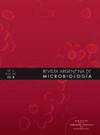Endemic coronavirus in children and adults with acute respiratory infection before the COVID-19 pandemic
IF 1.8
4区 生物学
Q4 MICROBIOLOGY
引用次数: 0
Abstract
Acute respiratory infection (ARI) is one of the principal causes of morbidity worldwide, with respiratory viruses being common etiological agents. Among them, endemic human coronaviruses (hCoVs) including CoV-229E, CoV-OC43, CoV-NL63, and CoV-HKU1 can cause mild ARI but are usually not evaluated in the clinical setting. The aim of this work was to determine the prevalence of all respiratory pathogens, with the focus placed on endemic hCoVs in the pre-pandemic period. Circulating species, clinical associations and coinfections with other respiratory pathogens were evaluated in 510 immunocompetent patients (children and adults) with ARI using the FilmArray® Respiratory Panel (BioFire/bioMérieux). A total of 399 children (252 outpatients and 147 hospitalized) and 111 adult outpatients were enrolled in the pre-pandemic period (2008–2010 and 2016). Endemic hCoVs were the third and fifth more frequently detected viruses among adults and outpatient children, respectively, with an overall frequency close to 10%. The most prevalent species were CoV-OC43 (42.8%) and CoV-HKU1 (40.5%), followed by CoV-NL63 (19.0%) and CoV-229E (4.8%). Tachypnea, wheezing and chest indrawing were more frequent in hospitalized children compared to outpatients. All adult patients presented with symptoms of a common cold. Endemic hCoVs were detected year-round, primarily between June and November. Our results highlight their clinical relevance, and the need to include endemic hCoVs in routine screening. In the post-pandemic period, further long-term surveillance is needed for understanding the epidemiology of endemic hCoVs and their evolution, as a tool to anticipate the possible emergence of new species.
COVID-19大流行前急性呼吸道感染儿童和成人中的地方性冠状病毒。
急性呼吸道感染(ARI)是全世界发病率的主要原因之一,呼吸道病毒是常见的病原。其中,包括CoV-229E、CoV-OC43、CoV-NL63和CoV-HKU1在内的地方性人类冠状病毒(hcov)可引起轻度ARI,但通常未在临床环境中进行评估。这项工作的目的是确定所有呼吸道病原体的流行情况,重点关注大流行前时期的地方性hcov。使用FilmArray®respiratory Panel (BioFire/ biom rieux)评估510例免疫功能正常的ARI患者(儿童和成人)的循环物种、临床关联和与其他呼吸道病原体的共感染。在大流行前时期(2008-2010年和2016年),共登记了399名儿童(252名门诊患者和147名住院患者)和111名成人门诊患者。地方性hcov在成人和门诊儿童中分别是第三和第五常见的检测病毒,总体频率接近10%。以CoV-OC43(42.8%)和CoV-HKU1(40.5%)最常见,其次是CoV-NL63(19.0%)和CoV-229E(4.8%)。与门诊患者相比,住院儿童呼吸急促、喘息和胸腔内缩的发生率更高。所有成年患者均表现为普通感冒症状。全年,主要在6月至11月期间发现地方性hcov。我们的研究结果强调了它们的临床相关性,以及在常规筛查中纳入地方性hcov的必要性。在大流行后时期,需要进一步开展长期监测,以了解地方性hcov的流行病学及其演变,作为预测可能出现的新物种的工具。
本文章由计算机程序翻译,如有差异,请以英文原文为准。
求助全文
约1分钟内获得全文
求助全文
来源期刊

Revista Argentina de microbiologia
MICROBIOLOGY-
CiteScore
3.30
自引率
0.00%
发文量
46
审稿时长
>12 weeks
期刊介绍:
La Revista Argentina de Microbiología es una publicación trimestral editada por la Asociación Argentina de Microbiología y destinada a la difusión de trabajos científicos en las distintas áreas de la Microbiología. La Asociación Argentina de Microbiología se reserva los derechos de propiedad y reproducción del material aceptado y publicado.
 求助内容:
求助内容: 应助结果提醒方式:
应助结果提醒方式:


